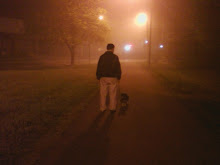Sermon preached February 24, 2013
Texts: Luke 13: 31-35
Do you ever wonder what your life looks like from the outside? Many of us, when we get into our forties, perhaps, and certainly by the time we are in our fifties and beyond, have those moments when we are kind of stunned to realize that we are now in our forties, fifties, sixties, seventies, eighties, nineties. Sometimes we just say to ourselves, or to others, “I don’t feel fifty.” But how do we really know if we have never been there before? I’ve come to the conclusion that part of feeling fifty plus is that you don’t really feel it.
We experience our lives from the inside, but do we stop to think what our lives look like from the outside? To do so too much is not a good thing. We would be overly self-conscious, always wondering how others are perceiving us. Yet I think it might do us good, at least on occasion, to stop and think what our lives might look like from the outside. I am fifty-three. I don’t really feel fifty-three, though how would I know because I have never been fifty-three before? I am fifty-three. I am not terribly tall. I don’t really think about this all that much. I’ve lost a lot of hair. Surprisingly I don’t think about that much either, though I know it saves me time in the shower in the morning.
So trying to see myself from the outside, I am going to be blunt here. I am short, bald and middle-aged. There are times when this outside perspective could be helpful. If I notice a younger woman, and the age for younger women keeps moving up, if I notice a younger woman glancing my direction my first thought probably should not be thinking of myself as thirty, but trying to see from the outside. I am short, bald, middle-aged, someone is glancing my direction. Do I have broccoli in my teeth? Has my hair blown over my scalp? Are my pants zipped?
On a broader level, it can be helpful for our church to look at ourselves from the outside. We know what a wonderful group of people we are – warm, caring, searching, wanting to make the world better. What some may see from the outside is a building that can be a little cold, and they might wonder if this is a place only for the well-to-do.
Pathways to God. No, I am not going to focus on looking at ourselves from the outside as a pathway to God. I want to talk about prayer as a pathway to God, and I have just taken my sweet time getting there. Yet there is a point to all this looking at things from the outside.
We typically think about prayer from our side of things. By that I mean when we talk about and teach about prayer, we focus on what we should do and perhaps on our inner experience of prayer. Twice since I have been pastor here, we have offered opportunities to study the book In God’s Presence: theological reflections on prayer by Marjorie Suchocki. By the way, I am going to be serving on a national denominational study commission with Marjorie and I am really looking forward to that. Marjorie’s book has chapters on intercessory prayer, prayers for healing, prayers of personal confession, prayers of corporate confession, liturgical prayers, the Lord’s prayer, and prayers of thanksgiving and praise. We might expect those kinds of things in a book about prayer – types of prayers that we might pray.
During Lent, 2011, our theme was prayer. We began by discussing the heart of prayer being relationship and transformation. Then we journeyed through meditative prayer, prayer as asking, silent prayer, prayer as lament and complaint, and prayer as gratitude.
Recently our district superintendent offered a workshop on prayer in the area, and it included methods of prayer such as praying with Scripture, prayer shawls and beads, prayer walks, labyrinth prayers, and body prayer.
We typically think about prayer from our side of things, and that’s o.k. St. Augustine, in his work, “The Confessions” addresses God. Yet the human, this part of your creation, wishes to praise you. You arouse us to take joy in praising you, for you have made us for yourself, and our heart is restless until it rests in you. (Book One, Chapter One). We think of prayer and we consider our restless hearts searching for God. We think of prayer and we trust that prayer changes us, as the Joan Chittister quote on the insert notes – “the function of prayer is to change my own mind, to put on the mind of Christ, to enable grace to break into me.”
We typically think about prayer from our side of things, and that’s o.k., but it might be helpful for us to consider prayer from God’s side of things. We get a glimpse of that in today’s Scripture reading. Jesus is on his way to Jerusalem. The story carries a feeling of foreboding. Pharisees warn Jesus to avoid Jerusalem because Herod wants to see Jesus eliminated. Jesus intends to outfox that fox Herod by continuing his work of teaching, healing and freeing. Then speaking as a prophet speaks, with the voice of God, Jesus says: Jerusalem, Jerusalem, the city that kills the prophets and stones those who are sent to it! How often have I desired to gather your children together as a hen gathers her brood under her wings, and you were not willing!
“How often have I desired to gather your children together as a hen gathers her brood under her wings” (NRSV). “I have often wanted to gather your people, as a hen gathers her chicks under her wings” (CEV). “How often I’ve longed to gather your children, gather your children like a hen, her brood safe under her wings” (The Message). God desiring, God wanting, God longing to enfold people. God seeking to wrap us as a hen tenderly gathers her chicks under her wings. This is prayer from God’s side.
This is not entirely a strange point of view. If you had been among those who read Marjorie Suchocki’s book In God’s Presence, you would have encountered prayer from God’s side. Prayer is not only for our sakes, but also for God’s sake (18). Our texts portray a God deeply involved with the world and its events, with God wooing the world to deeper modes of community and caring, wooing us toward deeper relation with one another and with God’s own self (19). Suchocki’s theological reflections on prayer evoke “the image of the dancing God who woos us to partnership through prayer” (127).
God longs for us, longs for our time and attention. God desires to be as close to us as our own breath. God is wooing us into a more intimate relationship.
Why does God woo us, long for us, desire us? God wants to gather us as tenderly as a mother hen gathers her chicks under her wings. God just wants to be close. In addition, prayer makes a difference to God. Again in the words of Marjorie Suchocki, these also found on your insert: God works with the world as it is to bring it toward what it can be. Prayer changes the way the world is, and therefore changes what the world can be. Prayer makes a difference to what God can do in and with the world. (31) Opening ourselves to God in prayer changes us, changes the conditions in the world God is trying to influence. We become more open vehicles for God’s love for the world. Our prayers means God has new material to work with as God works toward a newer world.
Prayer makes a difference to God and for God. Shifting back to our more typical perspective, prayer also makes a difference to us. Prayer changes us. It helps us grow “to experience the heart of life with all one’s heart and soul and might” (Michael Eigen, Contact With the Depths, 116).
Prayer changes us. In a novel I just recently finished, writer Annie Dillard penned this line: What was solitude for if not to foster decency? (The Maytrees, 165) Solitude, prayer draws us closer to God, and we are changed. We cannot be drawn closer to the heart of God without having our own hearts and souls changed.
Prayer is a pathway to God. It is a two-directional pathway. We take time for God, reach out to God and find that a longing God is always already reaching toward us, wooing us.
Two final words. Some of the best advice I ever read about prayer was this ancient piece of spiritual guidance: Pray as you can pray, don’t pray as you can’t pray. (Thomas Langford, Prayer and the Common Life, 12) Prayer can be daunting. Just do it. Find a method that works for you and pray. Perhaps the second best advice about prayer I’ve encountered is found in Anne Lamott’s most recent book. Lamott: I do not know much about God and prayer, but I have come to believe, over the past twenty-five years, that there’s something to be said about keeping prayer simple. Help. Thanks. Wow. (Help, Thanks, Wow: the three essential prayers, 1)
If you are ever having problems getting started with a prayer, may you hear the wooing voice of the longing God: How often have I desired to gather, longed to gather, you as a hen gathers her brood under her wings. Amen.
Subscribe to:
Post Comments (Atom)


No comments:
Post a Comment